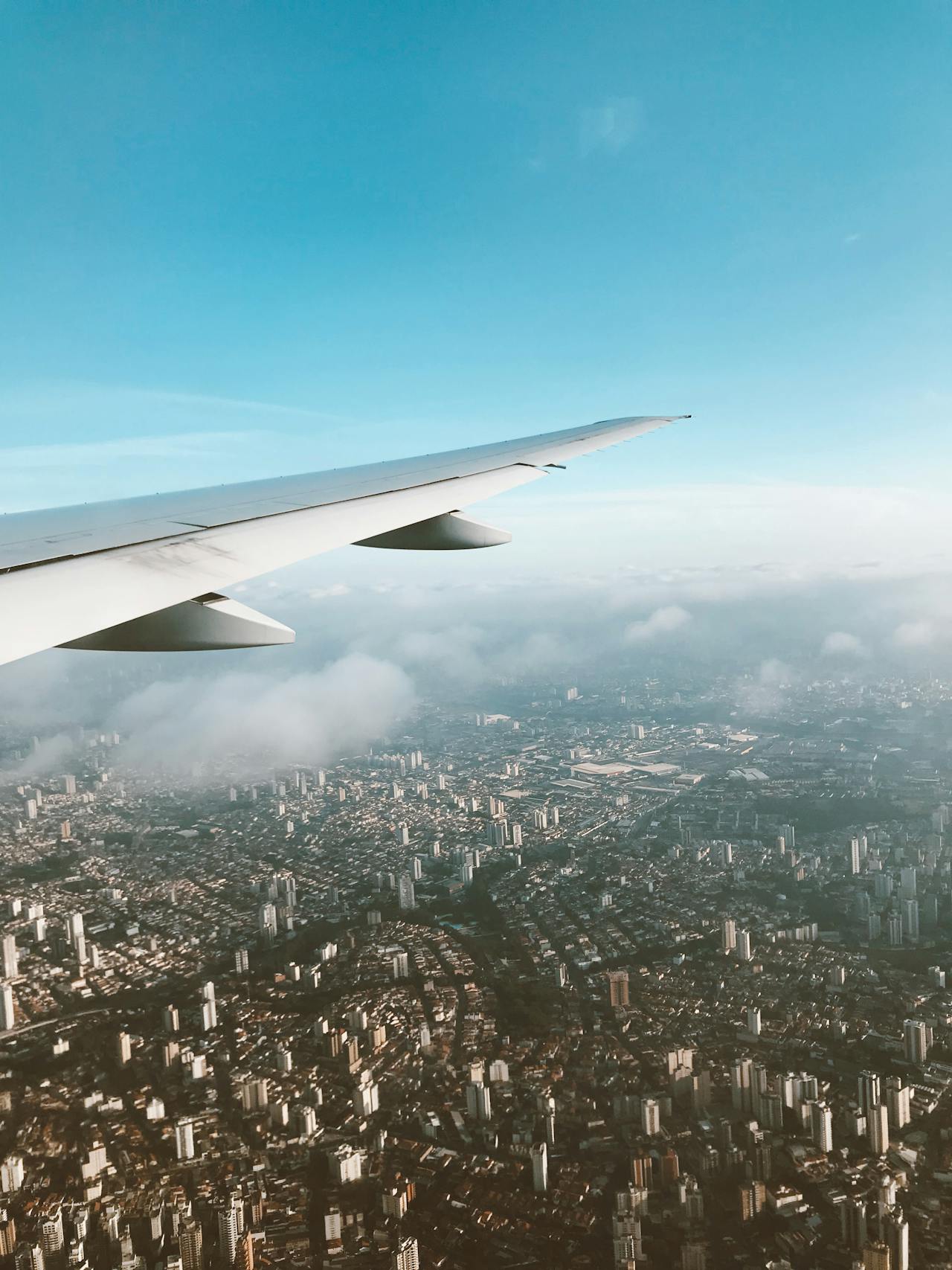Table of Contents
Have you ever stepped off a plane feeling tired, foggy, and like you need a week to recover? If so, you’re not alone. Traveling can take a real toll on the body, between disrupted routines, lack of sleep, time zone changes, and all the time sitting in cramped airplane seats. But there’s another less-talked-about factor that may be contributing to how you feel in transit: electromagnetic fields (EMFs).
We know EMFs are an inescapable part of modern life, but exposure on airplanes is uniquely concentrated. We’re surrounded by EMFs on the ground from our phones and Wi-Fi to Bluetooth and smart devices, but when you’re flying? You’re in an enclosed space packed with tech. That concentrated exposure, combined with the physical and mental stress of travel, can amplify feelings of fatigue, brain fog, and that general sense of imbalance.
But that doesn’t mean you should skip your next flight. There are simple ways to support your body before, during, and after travel – no matter how far you’re flying.
EMFs in Flight: Exposures at 30,000 Feet
It’s no secret that airports and airplanes are packed with tech. We rely on that tech to get where we’re going, but it does create a very loud electromagnetic environment. During travel, EMFs in flight and in airports show up as:
Wi-Fi, both in the airport and in-flight
Bluetooth luggage trackers and smart suitcases
Wireless devices, including yours and every other traveler around you
The aircraft itself, which contains loads of incredible and complex electrical equipment
Security scanners in airports
Cosmic radiation from being at high altitudes – a natural source of EMFs
That’s a lot of electromagnetic activity concentrated in one place. When you’re flying for hours or hopping from airport to airport multiple times, that exposure adds up.
Beyond Jet Lag: How EMFs Might Affect How You Feel
Many of us experience a drained, unwell feeling after flying. Not only are our sleep schedules often thrown off leading up to a flight, but our diets, hydration, and exercise routines can take a hit as well during travel time. Throw in a few hours of dry, recycled cabin air? It’s no wonder we feel “off.”
EMFs may also be contributing in ways we don’t think about. After all, our bodies are bioelectrical. From the brain to the heart to the cells, our bodies rely on electrical signals to keep everything running smoothly. Those signals can get disrupted in high-EMF environments like airplanes. For some people, EMF exposure can lead to symptoms like:
These symptoms could be signs your body is working overtime to adapt to the environment around you. The good news? There are simple ways to counteract the stress of flying – whether it’s from routine disruptions or higher EMF exposure.
Supporting Your Body on the Go
It doesn’t have to be complicated. Small choices can make a big difference in how you feel, especially when combined with EMF support.
Remember to hydrate before, during, and after flying. Your cells will thank you.
Try to limit screen time. This can be hard, especially during long flights. Look for books or magazines that align with your interests before you travel to help pass some of the time without staying “plugged in” for hours on end.
Find ways to move. Whether that’s taking walks in the airport or doing simple seat-stretches on the plane, keeping your body moving will help you bounce back quicker after that flight.
Catch morning sunlight to support your circadian rhythm, especially after a red-eye flight.
Bring along your Aires device. Aires technology supports balance in high-EMF environments by creating a more coherent field that helps your body interact with EMFs in a more biologically friendly way.
Travel Smarter, Feel Better
Travel is an opportunity to explore, connect with loved ones, and make waves in our careers. It’s supposed to open us up, not wear us down. But if you’re a frequent flyer and you’ve noticed that certain symptoms show up every time you travel, it may be time to pay attention to your electromagnetic environment.
EMFs aren’t going anywhere. They’re a necessary part of modern life, and they’re especially concentrated during air travel. But with the right tools and habits, we can support our bodies to adapt more easily. Simple wellness practices like staying hydrated, grounding after you land, and syncing your sleep to local daylight can help your body recover faster and function better while traveling. Pair those habits with a wellness technology like Aires? You’re giving your body an added layer of support that helps maintain resilience in the most demanding of environments.
There’s no need to overhaul your entire routine to travel well. It’s all about being aware of what your body is navigating and giving it what it needs to thrive. With a few mindful choices, you can step off the plane feeling like yourself, and ready for whatever comes next.






